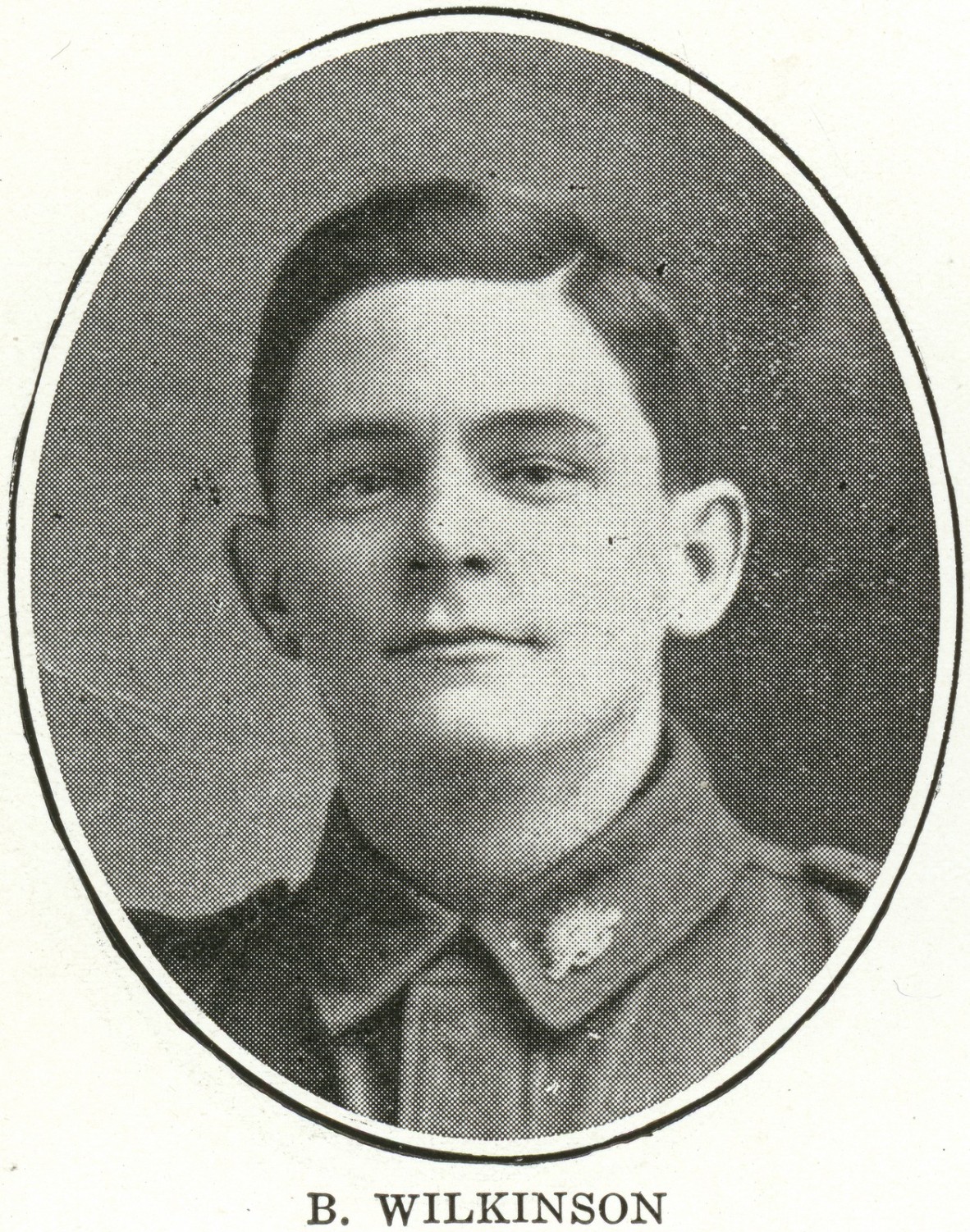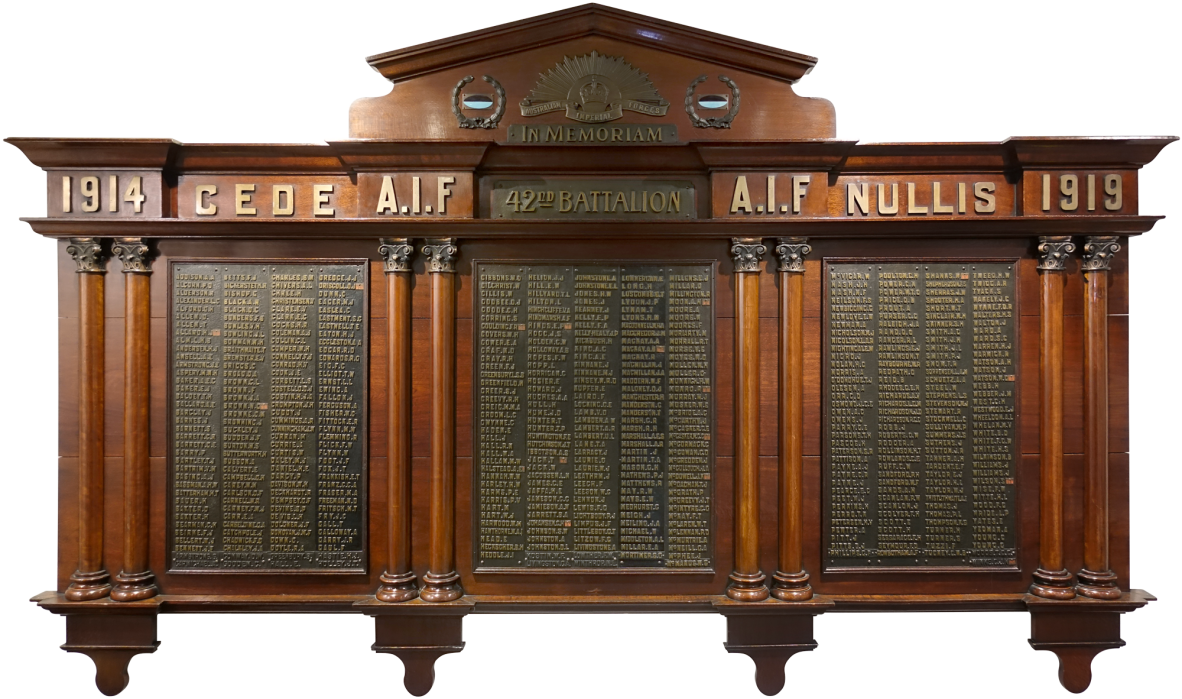Stories behind the name: Bert Wilkinson 42nd Infantry Battalion
By Alice Rawkins, Visitor Services Assistant, Anzac Square Memorial Galleries | 4 November 2020

Portrait of B Wilkinson. State Library of Queensland. Image no. 704259-s0258-0009
On 6 February 1916, Bert Wilkinson enlisted with the Australian Imperial Forces; he was only 19 years and 4 months old. Bert was the son of Joseph and Mary Wilkinson and had been born and educated in Rockhampton. Prior to enlisting he had been working as a labourer. He was assigned to the 42nd Infantry Battalion, which had been established at Enoggera in December 1915. This battalion become known as the “Australian Black Watch”, as it shared its numerical value with the famous Scottish Regiment called “The Black Watch”.
Bert completed his initial training in Brisbane before embarking overseas on the HMAT Seang Choon, leaving on 10 April 1916. He and his battalion arrived in Egypt on 15 May 1916, where they completed an additional three months of training before sailing to England. The battalion arrived at Larkhill on 22 August 1916. In November, it was deployed to France, and later Belgium, to fight against German forces on the Western Front.
Due to medical issues, Bert did not accompany his battalion to the Western Front. On 28 September 1916, he was admitted to the 1st Australian Dermatological Hospital (1ADH). He was one of 60,000 Australian soldiers who contracted a venereal disease (VD) during World War One. The 1ADH specialised in treating VD and, at its peak, was able to accommodate 1,500 patients. Treatment was often lengthy, painful and imperfect, as penicillin had yet to be discovered. Treatments included injections of mercury, arsenic and 606 (arsphenamine), the first modern chemotherapeutic agent. Bert was discharged from the AIF for a period 194 days while receiving treatment and recovering from gonorrhoea. He returned to active service with the 42nd Battalion in July 1917.
The 42nd Battalion was involved in several major campaigns in 1917 while stationed in Belgium. This included action at Warneton in late July, Broodseinde in early October, and then at Passchendaele on 12 October, where they suffered major casualties. It was during this campaign that Bert was admitted to hospital with ICT Foot (inflammation of the connective tissue), which was caused by poor weather conditions in the trenches. He was invalided back to England for treatment at St Andrew’s Hospital on 20 October 1917. After recovering, Bert was given furlough from 4 January to 18 January 1918, but failed to report back to officials until 22 January. He was charged with being absent without leave and forfeited 19 days’ pay as punishment.
Bert re-joined his battalion in France on 15 April 1918. The 42nd had been moved to France to help blunt the German Spring Offensive, a series of attacks along the Western Front that aimed to break through the Allied defences in the Somme area. In early August, Allied forces launched their own offensive, the 100-day offensive. The 42nd Battalion was involved in initial attacks around Amiens, and then at subsequent advances as allied forces attempted to break through the Hindenberg Line.
On 10 August 1918, Allied forces launched an attack on Proyart, a village in the Somme Valley. The aim was for troops, supported by six tanks, to advance in column 1,200 metres along a dead straight road. Forces would then turn and advance another 3.5km due north to the river and establish a new front line between the road and river, thereby cutting off a large section of German-held ground. However, allied forces were unable to complete the first stage of this action, with troops bombed by German Aircraft and then halted by heavy German machine-gun fire from around the village. Follow-up assaults by Allied forces on 11 August were successful, forcing German troops to begin withdrawing from the area. Proyart was then occupied by patrols from the 10th Brigade on 12 August. It was during this action that Bert received shrapnel wounds to the thigh and face and was gassed. He was evacuated by the 51st Field Ambulance to the 55th Casualty Clearing Station before being admitted to the 2nd Canadian General Hospital. On 20 August 1918 Bert succumbed to his wounds. He was buried at Mont Huon Cemetery, France.

Honour Board for the 42nd Australian Infantry Battalion, World War One Crypt, Anzac Square, Brisbane
Bert Wilkinson’s name is one of over 400 that are listed on the 42nd Infantry Battalion Honour Board that resides in the World War One Crypt at Anzac Square, Brisbane. These are the names of the individuals who made the ultimate sacrifice, while protecting the interests of Australia and the British Empire. Behind each name is a unique tale of service, honour and bravery. In the lead up to Remembrance Day, the Anzac Square team has been working to link these names to soldier portraits and images in the State Library of Queensland’s online catalogue, One Search. So far, staff have found more than 170 images and portraits, which can be viewed here. Throughout this project, staff have also discovered amazing and tragic stories about these individuals, like Bert Wilkinson, which deserve to be shared.
In the lead up to this Remembrance Day why not plan a visit the Anzac Square Memorial Galleries and explore our WWI Memorial Crypt and plaques? The Galleries are open from 10am-4pm Sunday to Friday. Don’t forget to ask staff about the amazing individuals who served with the 42nd Battalion!
Further Resources:
Bert Wilkinson Service papers: Here
Family Notice: Newspaper Article
Birth, Marriages and Deaths: Newspaper Article
Anzac Square Website: Here
More information
One Search - http://onesearch.slq.qld.gov.au
Comments
Your email address will not be published.
We welcome relevant, respectful comments.